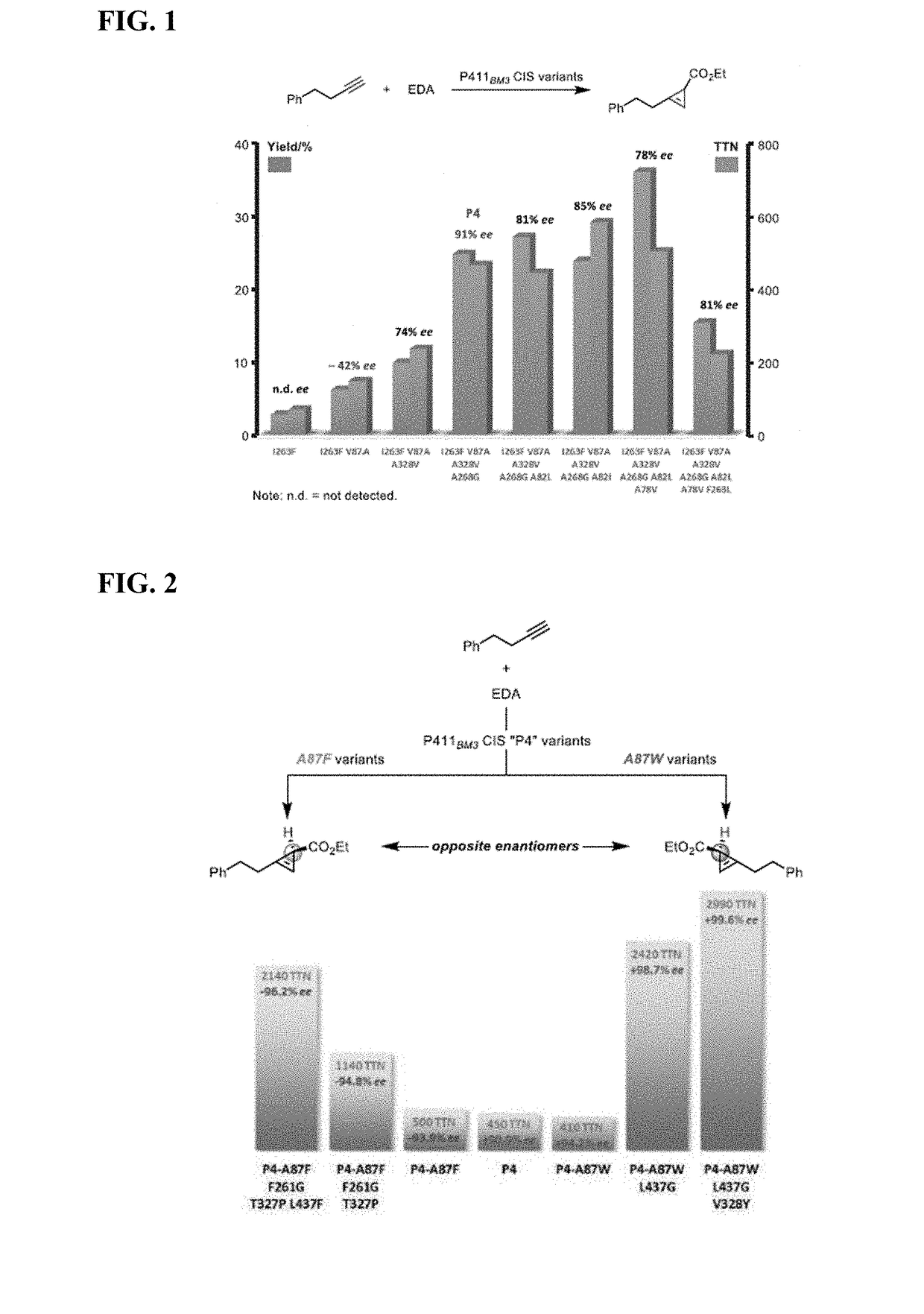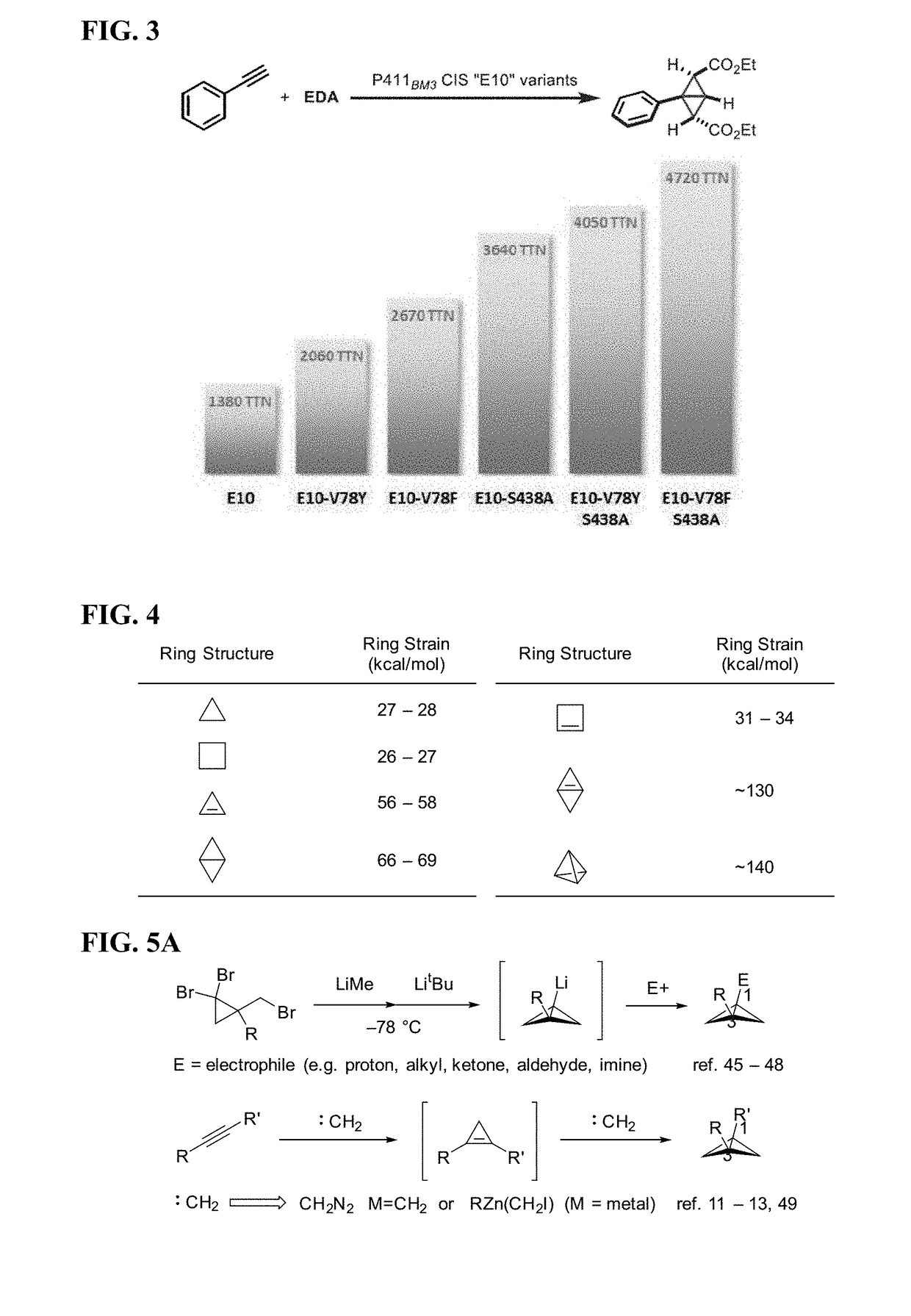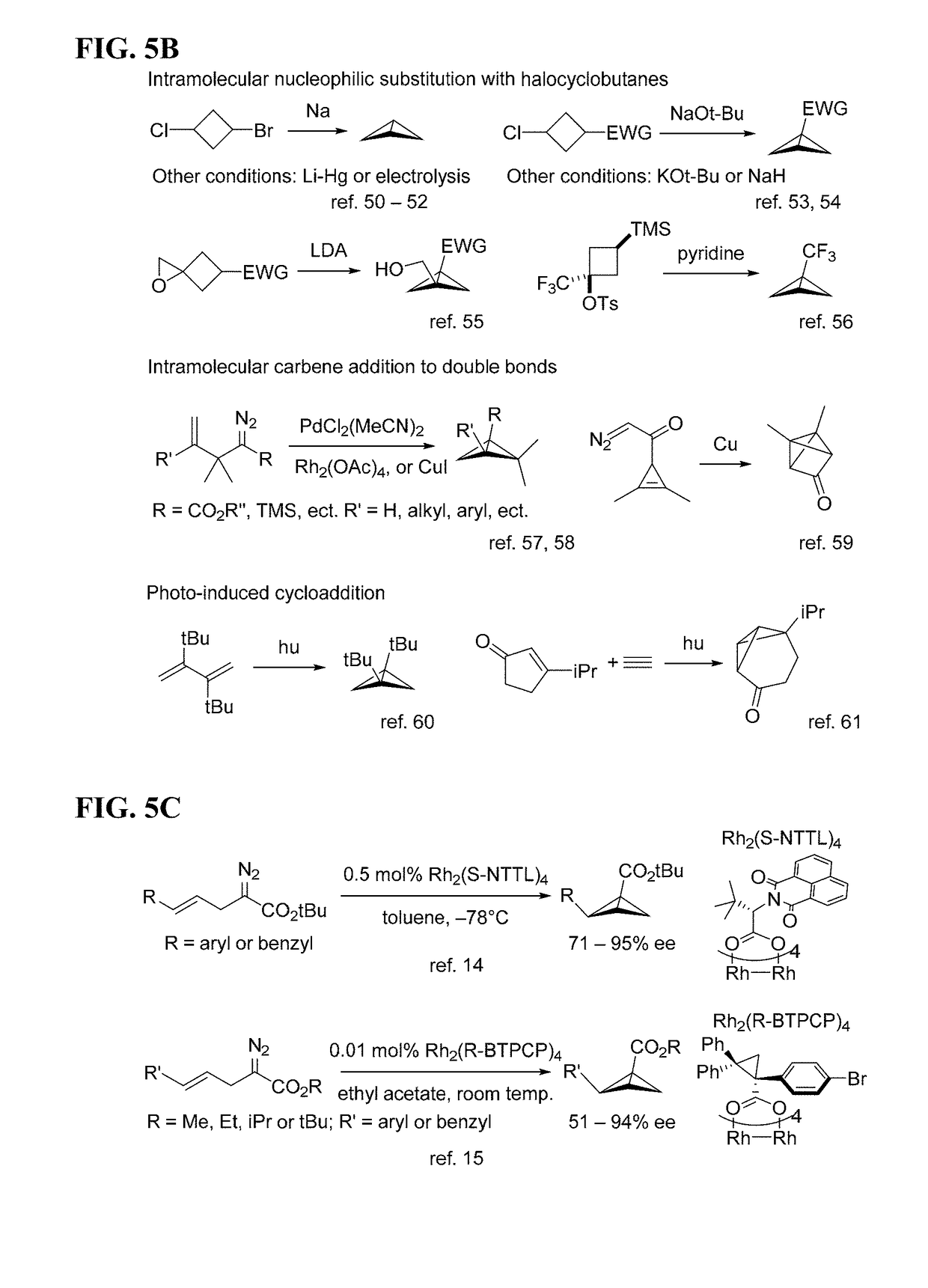Biocatalytic Synthesis of Strained Carbocycles
a technology of biocatalytic synthesis and carbocycle, which is applied in the direction of oxidoreductases, biochemistry apparatus and processes, enzymes, etc., can solve the problems of low catalytic efficiency, no native enzymes have been discovered to catalyze the construction of highly strained three-membered carbocycles, and the broad substrate scope and industrial production is less practicable. , to achieve the effect of optimizing activity, stability and/or stability
- Summary
- Abstract
- Description
- Claims
- Application Information
AI Technical Summary
Benefits of technology
Problems solved by technology
Method used
Image
Examples
example 1
Enzymatic Cyclopropenation to Yield Compounds of Formula III Using P450BM3 Variants In Vivo
[0266]P450BM3 expression. 45 ml Hyperbroth (100 μg / ml ampicillin) was inoculated with an overnight culture of 5 ml LB (100 μg / ml ampicillin). The overnight culture contained recombinant E. coli BL21-DE3 cells harboring a pET22 plasmid, encoding the P450BM3 variant under the control of the T7 promoter, and the P450BM3 maturation (ccm) operon under the control of a tet promoter, respectively. The cultures were shaken at 220 rpm at 37° C. for approximately 2.5 h. The flask containing the cells was placed on ice for 20 min. The incubator temperature was reduced to 20° C., maintaining the 130 rpm shake rate. Cultures were induced by adding IPTG and aminolevulinic acid to a final concentration of 0.5 mM and 0.5 mM respectively. The cultures were allowed to continue for another 18-22 hours at this temperature and shake rate. Cells were harvested by centrifugation (4° C., 6 min, 4,500×g) to produce a ...
example 2
Enzymatic Bicyclobutanation to Yield Compounds of Formula VI Using P450BM3 Variants In Vivo
[0272]P450BM3 expression. The procedures for P450BM3 expression were identical to those described in Example 1.
[0273]Preparation of whole cell catalysts. The procedures for whole cell catalyst preparation were identical to those described in Example 1, except OD600=30.
[0274]Small-scale bicyclobutanation reactions in whole-cell suspension under anaerobic conditions. Small-scale (400 μL) reactions were carried out in 2 ml glass crimp vials (Agilent Technologies, San Diego, Calif.). Cell suspension (OD600=30, 340 μL) was added to an unsealed crimp vial before crimp sealing with a silicone septum. The headspace of the vial was flushed with argon for 10 min (no bubbling). A solution of D-glucose (40 μL, 250 mM) was added, followed by a solution of alkyne of Formula IV (10 μl, 400 mM in EtOH; for example, phenylacetylene) and a solution of diazo reagent of Formula V (10 μl, 400 mM in EtOH; for examp...
example 3
Preparation of Bicyclobutane-Dicarboxylic Acids and Polyester Synthesis Using Diacids and Diols
[0277]Aliphatic polyesters with enhanced hydrophilicity and less toxicity have captured increasing attention due to their good biocompatibility and biodegradability, which allows their broad biologically relevant applications. (See, e.g., Lecomte, et al. Advances in Polymer Science, Vol. 245; 2012; pp 173-217; Engels, et al. Angew. Chem. Int. Ed. 2013, 52, 9422; Datta, et al. J. Chem. Technol. Biotechnol. 2006, 81, 1119; Ikada, Y. et al. Macromol. Rapid Commun. 2000, 21, 117.) Especially, in biomedical fields, a myriad of polyesters have been investigated with their potential use as drug delivery vesicles, bone screws and scaffolding or suture wire. (See, Chasin & Langer. Biodegradable Polymers as Drug Delivery Systems; Marcel Dekker Inc: New York, 1990.) Employing monomers with (strained) cyclic structures for polyester synthesis would add stiffness to the polymer chain with substantial i...
PUM
| Property | Measurement | Unit |
|---|---|---|
| pH | aaaaa | aaaaa |
| molecular weight | aaaaa | aaaaa |
| length | aaaaa | aaaaa |
Abstract
Description
Claims
Application Information
 Login to View More
Login to View More - R&D
- Intellectual Property
- Life Sciences
- Materials
- Tech Scout
- Unparalleled Data Quality
- Higher Quality Content
- 60% Fewer Hallucinations
Browse by: Latest US Patents, China's latest patents, Technical Efficacy Thesaurus, Application Domain, Technology Topic, Popular Technical Reports.
© 2025 PatSnap. All rights reserved.Legal|Privacy policy|Modern Slavery Act Transparency Statement|Sitemap|About US| Contact US: help@patsnap.com



